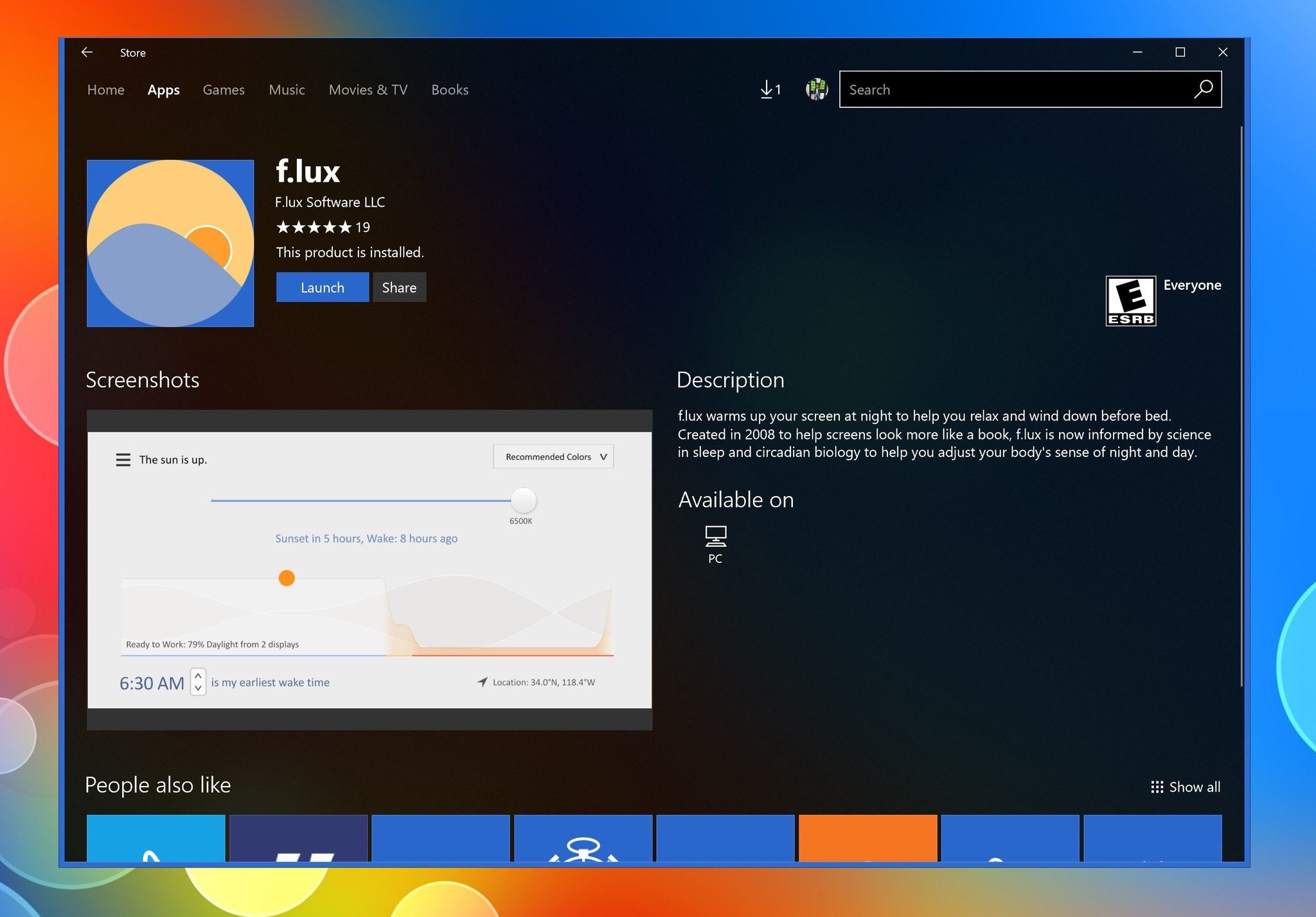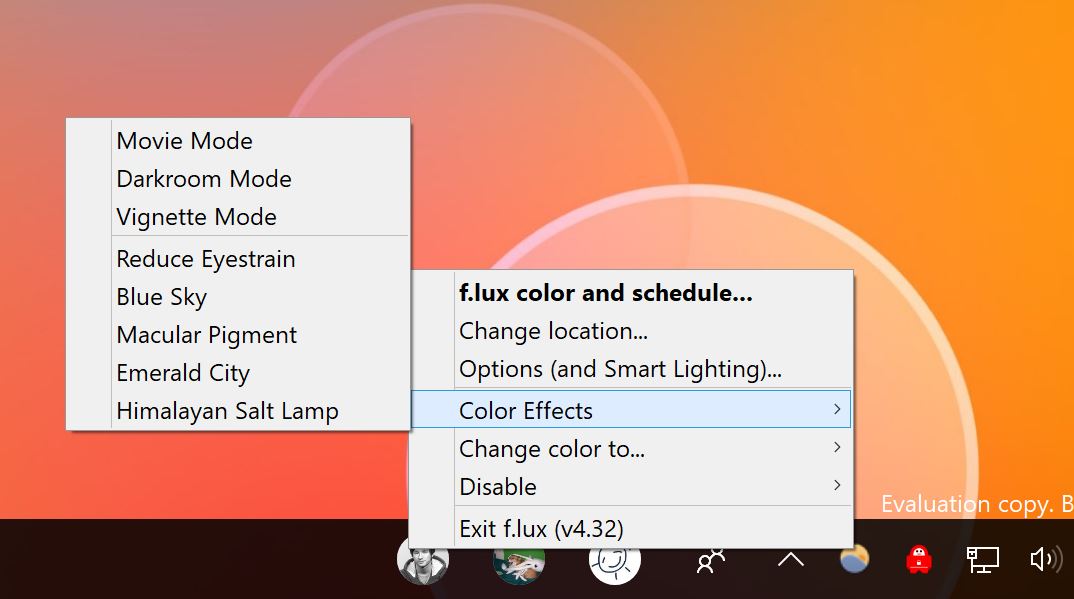F.lux uses Centennial Bridge to jump to the Windows Store

Although Microsoft introduced its Night light feature with the recent Creators Update f.lux was first for Windows PCs. The standalone Win32 app has been around for years as a freebie and user-supported application, but now it has found its way to the Windows Store as a UWP Centennial app (via MSPU).
For those who are unaware f.lux shifts the color spectrum of your PC's display in the evening giving a more yellow or red hue. Compared to bright whites the reduced blue light associated with displays is easier on your eyes late at night. Moreover, reduced blue light is supposed to better before going to bed as staring at a bright light can throw off your circadian rhythm.
So why use f.lux over Microsoft's Night light? F.lux brings more customization and features like hooking into your Smart Lights (e.g. Philips Hue) so that you can reduce all your lighting at the same time. Moreover, you can control things like the speed at which the display color shifts, making it less drastic or quickly disable the feature for an hour while working in Photoshop. There are also many lighting presets that offer a greater range than Microsoft's Night light, plus it's all free.
As Microsoft gets ready to roll out Windows 10 S with the Surface Laptop apps like f.lux coming to the Windows Store – along with Spotify and iTunes later this year – will go a long way to getting people off .exe installers and into the superior Store experience.

As a longtime user of f.lux, I'm quite excited to see this app along with Adobe Photoshop Elements and CrystalDiskMark use the Centennial bridge. You can read more about f.lux at their website.
Download f.lux from the Windows Store
Get the Windows Central Newsletter
All the latest news, reviews, and guides for Windows and Xbox diehards.

Daniel Rubino is the Editor-in-chief of Windows Central. He is also the head reviewer, podcast co-host, and analyst. He has been covering Microsoft since 2007 when this site was called WMExperts (and later Windows Phone Central). His interests include Windows, laptops, next-gen computing, and wearable tech. He has reviewed laptops for over 10 years and is particularly fond of 2-in-1 convertibles, Arm64 processors, new form factors, and thin-and-light PCs. Before all this tech stuff, he worked on a Ph.D. in linguistics, performed polysomnographs in NYC, and was a motion-picture operator for 17 years.
